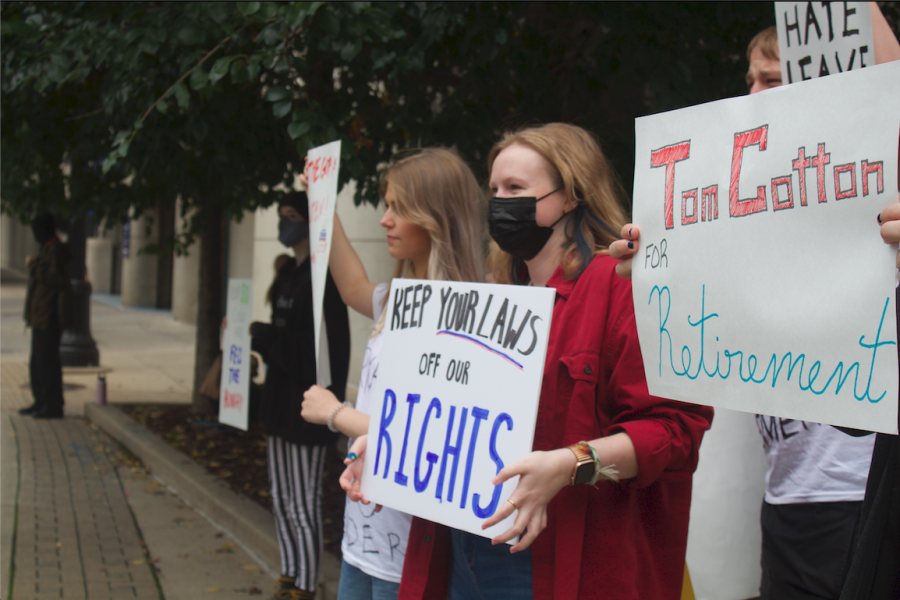Flint, Mich., was declared to be in a state of emergency due to the contamination of lead in their water on Jan. 6, 2016. As a result, Governor Snyder has been a recipient of severe complaints for not acting on the problem sooner, but this is not where the crisis began.
As early as 2004, concerns began to arise about using the Flint River for an emergency backup source for drinking water as it is a river with a high risk of being contaminated from agricultural and urban runoff. It did meet the standards of water quality and was uncontaminated at the time. However, it was highly susceptible to potential future contamination.
In June 2012, a Flint emergency manager asked the Detroit Water and Sewage Department (DWSD) for permission to merge their water with the Flint River in order to save Flint an annual $2-3 million. This came about because at the time, Flint had been depending entirely on the DWSD (with water from the Detroit River and Lake Huron) as their water source. Later in the year, due to rising costs with the DWSD, Flint began to look at the Karegnondi Water Authority (KWA) as a long-term option for Flint water. After much deliberation, Flint decided to disconnect from DWSD and temporarily switch to the Flint River as a primary water source as they wait for the KWA to be ready.
Prior to using the river, officials warned that the system used to monitor the water would need to be updated, and the city began planning for the water treatment plan to address this and upgrade the quality of the water. On April 25, 2014, the Flint River began distribution throughout the city and was officially declared as Flint’s temporary primary water source. In June, complaints about the quality of the drinking water began coming in.
In August, the city added their first dose of chlorine to their water treatment after discovering coliform bacteria in the water, and in September, General Motors declared that they would no longer use the river water for their engine plant due to the high levels of chloride that may cause corrosion.
For the next couple of years, the concerns over the Flint water quality continued and more discoveries were made, including Legionnaire’s disease, a pneumonia caused by inhaling water vapor, and the first detection of lead in college campus fountains in January 2015. Upon the detection of lead, the DWSD offered to rejoin, but Flint’s emergency manager declined due to concerns about it would affect Flint financially.
Flint officials began planning to test the water for its safety and monitor lead levels. The city received offers from engineering firms to revise the chemical treatment and received and declined a lawsuit demanding that the city reconnect with Detroit’s water system. These problems continued, full of Legionnaire’s disease outbreaks, citizen complaints, a lack of corrosion control, warnings for citizens not to drink the city water and high lead levels, sending Flint into a financial and moral dilemma.
Despite action plans to test the water in schools and address Flinter water issues, Flint itself called emergency status in December 2015, and in January 2016, the United States Environmental Protection Agency (EPA) issued an Emergency Order for Flint’s water, alerting local, statewide and nationwide authorities about the crisis. This national call for help urged national aid toward solving this crisis. The Department of Health and Human Services provided a list of steps to be taken after the emergency declaration, concerning the state of the citizens of Flint, and has done much to make the area a safer and more efficient place to live, both for things that are occurring now and for the future. This list includes the EPA working with state and local officials on water testing as well as providing safe water to the Flint residents. EPA teams are collecting drinking water samples from homeowners in order to better understand how lead is affecting their plumbing and sending the samples for analysis. In addition, certified lead removal filters are being installed in homes in order to remove the lead from household water, encouraging residents to have their water tested for safety.
Due to the water now being unsafe for drinking, Flint residents have had to depend on bottled water. With this knowledge, the Federal Emergency Management Agency (FEMA) is providing bottled water, water filters and other necessary items to the state of Michigan to distribute to Flint residents. In addition to the water bottle donations from the FEMA, many other organizations have joined in this effort, such as celebrities, companies and independent organizations, including a group of Calvin students who came to Flint’s aid.
Alongside provisions to prevent lead contamination, steps are also being taken to address needs of those that have potentially already been contaminated by lead. Public health education is being distributed through several programs that will help families understand the risks of lead in the water and encourage and assist lead screening.
The U.S. Department of Agriculture’s Special Supplemental Nutrition Program is allowing vouchers for infant formula that does not require mixture with water, and is also being referred to the local health department for lead screenings and nutrition education that will help individuals decrease lead absorption. The USDA also approved a request to fund schools with foods high in Vitamin C, which is recommended by the Center of Disease Control and Prevention to keep lead out of the body.
On Feb. 10, Senator Stabenow sent out a report stating that the U.S. Senate Committee on Agriculture, Nutrition and Forestry ensured that more families will have access to lead testing, a procedure that has been established throughout Flint since the discovery of lead in some of the water in 2015.
Flint still has a long way to go in water safety, but the national cry for aid at last gives the city opportunity to improve an issue that has been a long going struggle.









